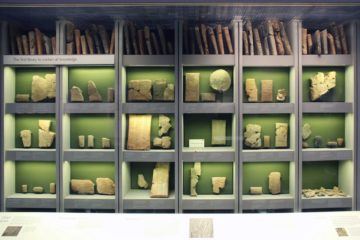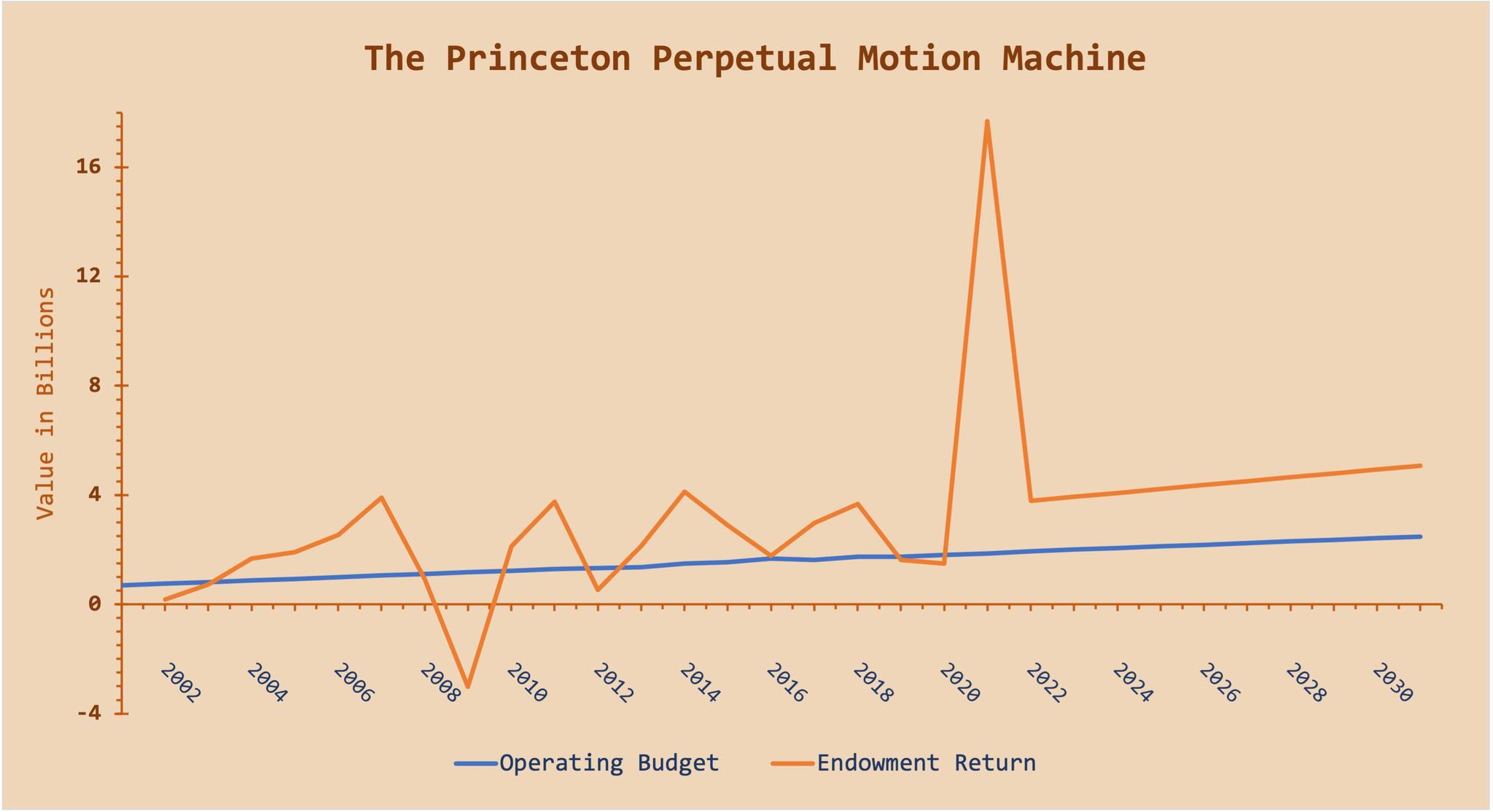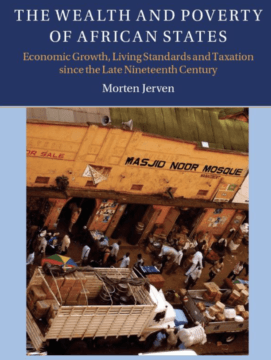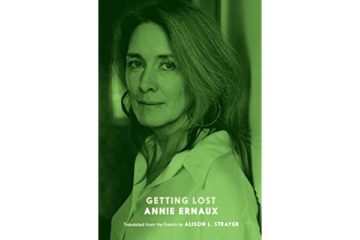Curious cow at the Fane Alm in the South Tyrol last week.
Month: October 2022
RadicalizeMe
by Ethan Seavey
 If you look at my profiles online, they are catered to appear normal, if dated. I haven’t posted very much over the past few years, and those that I have posted have been relatively mundane, which mark the relatively mundane moments of my life. They’re honest and small, like a photo of the street as I walk to school, or a picture of my friends at a park. My profile molds itself to match me.
If you look at my profiles online, they are catered to appear normal, if dated. I haven’t posted very much over the past few years, and those that I have posted have been relatively mundane, which mark the relatively mundane moments of my life. They’re honest and small, like a photo of the street as I walk to school, or a picture of my friends at a park. My profile molds itself to match me.
My feed, however, tells a different story. If you were able to see what I am gifted by the algorithms of Snapchat, Youtube, and Instagram you would have a wildly different opinion of me. Scroll just a little and you’ll hear phrases like “Men hit their prime at 30-40, while women peak in their early 20s” and “when I get married, she won’t get access to my bank account; she’ll receive an allowance of 2 million a year; you can’t trust them, I’m serious.” A couple of months ago, my feed looked nothing like this. There were memes about Pokémon, ads for mobile games, and prank compilations. Now, my feed is full of straight white men teaching me how to power up my masculinity.
The ease with which I was able to deliberately change to this side of social media does worry me. For no other reason than the fact that I didn’t want to download Tiktok, I started watching the TikToks which appear in my Snapchat Spotlight feed. The idea, though, is the same: an infinite stream of short videos. The randomness to the media is part of the allure. Every time you swipe you can find a new video. If you engage with a video, by liking or sharing, or even by lingering on the video until it has finished, the algorithm learns to give you more similar content. That’s why when I started watching Spotlights I received only mobile game ads, because I had recently deleted all games from my phone and would listlessly watch others play them instead. Read more »
The Face of a Dervish
by Shadab Zeest Hashmi
 Before I met Hayat Nur Artiran, I had only had a raw understanding of what female selfhood may look like, a notion I have been attempting to refine in my writings over many years. Here, at the Mevlevi Sufi lodge in Istanbul, I received a lifetime’s worth of illumination about the power of the spirit in the company of Nur Hanim, beloved Sufi Hodja and the President of the Sefik Can International Mevlana Education and Culture Foundation. A researcher, author and spiritual leader on the Sufi path known as the Mevlevi order (based on the teachings of Maulana Jalaluddin Muhammad Balkhi Rumi, known in the West simply as the poet Rumi), Nur Hanim’s accomplishments shine a light on an ethos that has transformed hearts for nearly a millennium. More instrumental than personal achievement in this case, is the Sufi substance and finesse that Nur Hanim has nurtured in the running of this Mevlevi lodge. Spending a day here, on my most recent visit to Istanbul, I came to experience what I had thought possible, based on my Muslim faith, but had never witnessed before: men and women coexisting, learning, working and serving in harmony, a place where one forgets the ceaseless tensions between genders, generations, ethnicity, or those caused by differences in religious beliefs or the self-worshipping individualism that has become the insignia of modernity. Read more »
Before I met Hayat Nur Artiran, I had only had a raw understanding of what female selfhood may look like, a notion I have been attempting to refine in my writings over many years. Here, at the Mevlevi Sufi lodge in Istanbul, I received a lifetime’s worth of illumination about the power of the spirit in the company of Nur Hanim, beloved Sufi Hodja and the President of the Sefik Can International Mevlana Education and Culture Foundation. A researcher, author and spiritual leader on the Sufi path known as the Mevlevi order (based on the teachings of Maulana Jalaluddin Muhammad Balkhi Rumi, known in the West simply as the poet Rumi), Nur Hanim’s accomplishments shine a light on an ethos that has transformed hearts for nearly a millennium. More instrumental than personal achievement in this case, is the Sufi substance and finesse that Nur Hanim has nurtured in the running of this Mevlevi lodge. Spending a day here, on my most recent visit to Istanbul, I came to experience what I had thought possible, based on my Muslim faith, but had never witnessed before: men and women coexisting, learning, working and serving in harmony, a place where one forgets the ceaseless tensions between genders, generations, ethnicity, or those caused by differences in religious beliefs or the self-worshipping individualism that has become the insignia of modernity. Read more »
The Palace and the Water Lily
by Eric Bies
 May of 1851, London, the world’s first World’s Fair.
May of 1851, London, the world’s first World’s Fair.
Just about Anyone who was (or was bound to be) Anyone was in attendance at the Great Exhibition of the Works of Industry of All Nations—a mouthful—among them: Charles Babbage, Charles Darwin, and Charles Dickens; Charlotte Brontë, Lewis Carroll, and George Eliot; Karl Marx, William Morris, and Alfred Tennyson; Tolstoy (a playboy, beardless and boyish) and Flaubert (accompanied by his mother).
If we were there we could have followed them: down the paths and over the lawns—beneath the little boys perched in the trees—thousands of visitors, many of whom had patronized this stretch of Hyde Park in the past, now encountered a new kind of structure rising from the green. Taking it all in, the word “magnificent” sprang to mind; in a chorus they called it the Crystal Palace—and no wonder, with its million square feet of floor space and monumental façade of leaping glass and iron.
 What all went inside? Apart from the full-grown trees and gallant blocks of statuary, a quick glance at a single page of the Exhibition’s Official Descriptive and Illustrated Catalogue instantly gluts the eye. This taxonomical mountain of close-set type, ranging over 3,000 pages in four volumes, threatens an avalanche of things: a portable steam engine, a hydraulic seed press, a pedestal planisphere, a bath of enameled copper, Irish bog-yew furniture, a triform railway signal, crystals of sulfate of iron, an overshot water-wheel, a hydraulic lifting jack, a low-bodied dog cart, a self-acting duplex lathe, an India-rubber air-gun, a liquid manure cart, a sheep-dipping apparatus, bar and frame beehives, an imitation oak timepiece, a black marble timepiece, a couch designed for invalids, a salinometer, an electric telegraph, racing whips, a pyro-pneumatic stove-grate, ornamented fire-dogs, a copper coal-scuttle, vulcanized valve-cocks, an Etruscan tea-urn, serpentine obelisks, a battle-ax, a shield of deer-skin, a bark canoe, a scale model of the steam-ship Medea—and much, much more. Read more »
What all went inside? Apart from the full-grown trees and gallant blocks of statuary, a quick glance at a single page of the Exhibition’s Official Descriptive and Illustrated Catalogue instantly gluts the eye. This taxonomical mountain of close-set type, ranging over 3,000 pages in four volumes, threatens an avalanche of things: a portable steam engine, a hydraulic seed press, a pedestal planisphere, a bath of enameled copper, Irish bog-yew furniture, a triform railway signal, crystals of sulfate of iron, an overshot water-wheel, a hydraulic lifting jack, a low-bodied dog cart, a self-acting duplex lathe, an India-rubber air-gun, a liquid manure cart, a sheep-dipping apparatus, bar and frame beehives, an imitation oak timepiece, a black marble timepiece, a couch designed for invalids, a salinometer, an electric telegraph, racing whips, a pyro-pneumatic stove-grate, ornamented fire-dogs, a copper coal-scuttle, vulcanized valve-cocks, an Etruscan tea-urn, serpentine obelisks, a battle-ax, a shield of deer-skin, a bark canoe, a scale model of the steam-ship Medea—and much, much more. Read more »
Charaiveti: Journey From India To The Two Cambridges And Berkeley And Beyond, Part 64 (Last)
by Pranab Bardhan
All of the articles in this series can be found here.
 Another cultural benefit of my travels, particularly in early days, used to be my exploration of international cinema. I have already mentioned how going out of India I became exposed to a riot of European art films. In later years I also saw some superb art films from Argentina, Brazil, Japan, Iran, South Korea, and Taiwan. In the US in many cities some of these art films were not always easily available, and I sometimes saw them in visits to New York or London, though with some lapse of time Pacific Film Archive in the Berkeley campus showed some good international films. Every time I went to Kolkata my friend Samik Banerjee told me about the new Bengali art films that came out in the months I was away and sometimes took me to their special screenings. Through him I came to know some of the major film directors and actors in Kolkata. Meanwhile the quality of American films improved a great deal. But the general commercial film world in the US largely catered to adolescent fantasy worlds or antics of superheroes from comic books or dystopian science fiction, none of which held much attraction for me. Even in more grown-up American films one often missed the sharp, witty, historically informed, and politically engaged conversation of friends and also a kind of cerebral sexuality that I used to associate with French films, for example– a character in Godard’s film Contempt famously said in bed: “I love you totally, tenderly, tragically”.
Another cultural benefit of my travels, particularly in early days, used to be my exploration of international cinema. I have already mentioned how going out of India I became exposed to a riot of European art films. In later years I also saw some superb art films from Argentina, Brazil, Japan, Iran, South Korea, and Taiwan. In the US in many cities some of these art films were not always easily available, and I sometimes saw them in visits to New York or London, though with some lapse of time Pacific Film Archive in the Berkeley campus showed some good international films. Every time I went to Kolkata my friend Samik Banerjee told me about the new Bengali art films that came out in the months I was away and sometimes took me to their special screenings. Through him I came to know some of the major film directors and actors in Kolkata. Meanwhile the quality of American films improved a great deal. But the general commercial film world in the US largely catered to adolescent fantasy worlds or antics of superheroes from comic books or dystopian science fiction, none of which held much attraction for me. Even in more grown-up American films one often missed the sharp, witty, historically informed, and politically engaged conversation of friends and also a kind of cerebral sexuality that I used to associate with French films, for example– a character in Godard’s film Contempt famously said in bed: “I love you totally, tenderly, tragically”.
Then, of course, came the days of DVD’s, and I became an avid member of several video stores in Berkeley. Different video stores, particularly the smaller ones, gave me the opportunity to savor a wide variety of international movies. I remember once when I heard about a new video store opening in a corner of Berkeley, in the very first week I went there and tried to see in what way their international DVD collection was distinctive. I got to talk to the young man who was the store owner-manager, and soon we were deep into our respective likes and dislikes in movies. I told him that there were some international movies which were in everybody’s list of all-time greats but not in mine (to take examples just from 1960’s films, say, Godard’s “Breathless”, or “Last Year in Marienbad” by Resnais—I actually liked the latter’s film “The War is Over” much more–, or “L’Aaventura” by Antonioni). Similarly, there were some movies that critics or film scholars did not quite rave about but I wanted to see them again and again (say, “The Double Life of Véronique” by Krzysztof Kieślowski from Poland, or “We All Loved Each Other So Much” by Ettore Scola from Italy, or “Landscape in the Mist” by Theo Angelopoulos from Greece)—I think it was more a matter of harmony with my temperament than technical qualities of the films. The young man gave me his preferred lists and we animatedly discussed them. At one point he shouted toward an inner room in the store where his wife was busy sorting out their new arrivals of DVD’s. He told her, “You call me a movie-maniac, come and see, here’s another one!” Read more »
Marvin Gaye at the Franprix
Justin E. H. Smith in The Hinternet:
 The signaling behavior of human beings is intricate indeed. Forty years ago a man, seething with desire, issued forth a string of identical second-person singular imperatives followed by a hortatory first-person plural:
The signaling behavior of human beings is intricate indeed. Forty years ago a man, seething with desire, issued forth a string of identical second-person singular imperatives followed by a hortatory first-person plural:
Get up, get up, get up, get up, let’s make love tonight.
As far as can be determined the immediate object of desire was not in his presence at the precise moment of his yearning. He might not have had a particular object in mind at all. No one followed the command, no one “made love”, at least not right away, at least not if we exclude the very form of erotopoiesis of which the expression of yearning was already the culmination. If we know about his yearning at all this is only because it came out of him in the presence of a complex arrangement of electrical signals and magnetic tape —basic materials and principles of the physical world—, which “recorded” his voice somewhat in the way tree rings record a season’s rain, and the layers of Antarctic ice record the radioactivity of a nuclear test in the Bikini Atoll. And like radioactivity, once such yearning is caught on tape and released into the world, it is hard indeed to drive it out again.
More here.
What Math Can Tell Us About the Nature of the Universe
Manil Suri in Literary Hub:
 The aim of my piece was to challenge the popular notion that mathematics is synonymous with calculation. Starting with arithmetic and proceeding through algebra and beyond, the message drummed into our heads as students is that we do math to “get the right answer.” The drill of multiplication tables, the drudgery of long division, the quadratic formula and its memorization—these are the dreary memories many of us carry around from school as a result.
The aim of my piece was to challenge the popular notion that mathematics is synonymous with calculation. Starting with arithmetic and proceeding through algebra and beyond, the message drummed into our heads as students is that we do math to “get the right answer.” The drill of multiplication tables, the drudgery of long division, the quadratic formula and its memorization—these are the dreary memories many of us carry around from school as a result.
But what if we liberated ourselves from the stress of finding “the right answer”? What would math look like if delinked from this calculation-driven motivation? What, if anything, would remain of the subject?
More here.
Right and left are united in a vulgar form of historicism
Arjun Appadurai in The Chronicle of Higher Education:
 The recent debate over “presentism” among historians, especially those based in the United States, has generated both heat and light. It is a useful conversation to have now, at a moment when the public sphere, and even more so the university’s space within it, seems to consist more of mines than of fields. Debates about Covid-19, affirmative (in)action, antisemitism, sexual violence, student debt, Title IX, Confederate monuments, racist donors, resigning presidents, and rogue trustees combine to occlude the daylight of classes, books, and learning.
The recent debate over “presentism” among historians, especially those based in the United States, has generated both heat and light. It is a useful conversation to have now, at a moment when the public sphere, and even more so the university’s space within it, seems to consist more of mines than of fields. Debates about Covid-19, affirmative (in)action, antisemitism, sexual violence, student debt, Title IX, Confederate monuments, racist donors, resigning presidents, and rogue trustees combine to occlude the daylight of classes, books, and learning.
It is no wonder that the hills are alive with the sound of presentism. Absent a serious space for reflection, debate, and deliberation in or on the actually existing present, it becomes easy to claim that my history is bigger than yours, or more ethically relevant, or more marginalized. In this weaponized sense everyone is in the history business, and it is only in the relative calm of graduate programs, annual meetings, journal submissions, and the recruitment of professional historians that the soothing hum of sources, chronologies, periods, and methods can still be heard.
The weaponized present is always lurking.
More here.
Malcolm Gladwell: Princeton University Is the World’s First Perpetual Motion Machine
Malcolm Gladwell in Oh, MG:
 After a stellar year in 2021, Princeton University has an endowment of $37.7 billion. Over the past 20 years, the average annual return for the endowment has been 11.2 percent. Let us give Princeton the benefit of the doubt and assume that at least some of that was luck and maybe unsustainable, and that a more reasonable prediction going forward would be that Princeton can average a return on its investments of an even 10 percent a year. That puts Princeton’s endowment return next year at roughly $3.77 billion.
After a stellar year in 2021, Princeton University has an endowment of $37.7 billion. Over the past 20 years, the average annual return for the endowment has been 11.2 percent. Let us give Princeton the benefit of the doubt and assume that at least some of that was luck and maybe unsustainable, and that a more reasonable prediction going forward would be that Princeton can average a return on its investments of an even 10 percent a year. That puts Princeton’s endowment return next year at roughly $3.77 billion.
Now—what is Princeton’s annual operating budget? $1.86 billion. The arithmetic here is not hard. $3.77 billion in investment income minus $1.86 billion in operating expenses leaves you with $1.91 billion.
Princeton could let in every student for free. The university administrators could tell the U.S. government and all of its funding agencies, “It’s cool. We got this.”
They could take out the cash registers in the cafeteria, hand out free parking to all visitors, give away Princeton sweatshirts on Nassau Street, and fire their entire accounts receivable staff and their entire fundraising staff tomorrow.
More here.
An Intimate History of Evolution – the incredible Huxleys
Stuart Jeffries in The Guardian:
 “Dear Sir,” wrote a nameless correspondent to Julian Huxley in 1937. “Would you consent to being the father of my wife’s child, possibly by artificial insemination?” Alison Bashford doesn’t reveal what prompted the request, nor if the evolutionary biologist, eugenicist and ecologist supplied the genetic material.
“Dear Sir,” wrote a nameless correspondent to Julian Huxley in 1937. “Would you consent to being the father of my wife’s child, possibly by artificial insemination?” Alison Bashford doesn’t reveal what prompted the request, nor if the evolutionary biologist, eugenicist and ecologist supplied the genetic material.
But she certainly knows why the correspondent would request it. The Huxley family, seemingly, had the right stuff that anyone would want to graft on to their family tree. The dynasty of geniuses began with Julian’s grandfather, Thomas Henry Huxley (1825-95), the great Victorian biologist and comparative anatomist known as Darwin’s bulldog for savaging critics of his friend’s account of natural selection, and proselytising that we descend not from Adam and Eve but from apes. His grandson Julian (1887–1975) was a biologist, a transhumanist, a poet, sci-fi writer, the secretary of London zoo, the first Unesco director general, a broadcasting catalyst for David Attenborough, a eugenicist and a leading figure in the “modern synthesis” that married Darwin’s theory of evolution with the first geneticist, gardening monk Gregor Mendel’s ideas on heredity.
The rest of the Huxleys were no slouches either. Julian’s physiologist half-brother Andrew was a Nobel laureate. Julian’s son Francis was an anthropologist and founder of Survival International. The most famous Huxley, Julian’s brother Aldous, author of Brave New World and devotee of consciousness-altering drugs, was perhaps a bit of an underachiever. The Huxleys were like the Kardashians in one sense only: it was hard to keep up with them.
More here.
Iran’s First Feminist Uprising Woman! Life! Freedom!
Kian Tajbakhsh in Public Seminar:
 Zan, Zendegi, Azadi: Woman! Life! Freedom!
Zan, Zendegi, Azadi: Woman! Life! Freedom!
This is the stirring slogan of the protests that have erupted across Iran, triggered by the death of Mahsa Amini, a 22-year old Kurdish Iranian woman who was visiting Tehran with her family when Iran’s morality police detained her on September 16 for showing too much hair under her hijab (head scarf).
Led by predominantly young women and men in their late teens and twenties, the nonviolent protests are expressing a range of priorities. Beyond their frustrations at the indignities of being harassed and arrested for violating the Islamic dress code—not to speak of the danger of dying as Amini did—most are also expressing a desire to live under a different system of government. I believe we are witnessing something unprecedented in Iranian history: a feminist social movement. The renewed demand for accountable government and individual freedom—the liberal democratic ideal—has sprung up from the battle over the patriarchal control of women’s bodies and the paternalistic domination of public space.
Today’s feminist movement, women and men alike, is saying no: women will exist in public not as wards under the control of male guardians of religious law, but as equal citizens. They are demanding recognition of basic individual human dignity and liberty, such as modern individuals have come to expect.
More here.
Bill Plante (1938 – 2022) Journalist And Correspondent
Pharoah Sanders (1940 – 2022) Jazz Saxaphonist
Ray Edenton (1926 – 2022) Country Music Guitarist
Sunday Poem
Barbarians
They do not come with furred caps,
Smelling of maresmilk, scimitared,
Dour, as tellable as kites.
They live quietly next door,
Speak almost the same language,
Wear almost the same clothes,
Inside the walls. But
Do not think they lack
Precisely the same intentions.
by John Fowles
from Poems– John Fowles
the Ecco Press, NY, 1973
Africa’s Century of Growth?
 Alden Young in Phenomenal World:
Alden Young in Phenomenal World:
On May 1, 2014, Nigeria’s then-president, Goodluck Jonathan, addressed a crowd of workers in the country’s capital Abuja. He declared that “the challenge of the country is not poverty, but redistribution of wealth.” The prompt for his comment was a report issued only a few days prior, which labeled Nigeria, Africa’s most populous country, as one of only five nations that are home to two-thirds of the world’s population living in extreme poverty. Rejecting the categorization of Nigeria as a poor country, President Jonathan pointed to the country’s Gross Domestic Production (GDP), which he declared was “over half a trillion dollars.” Moreover, the economy, he maintained, was “growing at close to 7 percent.”
It was only a week before the president’s address that the official figure for Nigeria’s GDP had been significantly revised. The first reexamination of the structure of the Nigerian economy since 1990 showed an increase in the country’s 2013 GDP by 89 percent. Scholars were surprised by the dramatic growth in the banking and telecommunications sectors and the significant decline in the relative size of the hydrocarbon sectors.
With little outside recognition, the Nigerian economy had transformed itself in the space of a couple of decades.
More here.
The New Math of Wrinkling
 Stephen Ornes in Quanta:
Stephen Ornes in Quanta:
A few minutes into a 2018 talk at the University of Michigan, Ian Tobasco picked up a large piece of paper and crumpled it into a seemingly disordered ball of chaos. He held it up for the audience to see, squeezed it for good measure, then spread it out again.
“I get a wild mass of folds that emerge, and that’s the puzzle,” he said. “What selects this pattern from another, more orderly pattern?”
He then held up a second large piece of paper — this one pre-folded into a famous origami pattern of parallelograms known as the Miura-ori — and pressed it flat. The force he used on each sheet of paper was about the same, he said, but the outcomes couldn’t have been more different. The Miura-ori was divided neatly into geometric regions; the crumpled ball was a mess of jagged lines.
“You get the feeling that this,” he said, pointing to the scattered arrangement of creases on the crumpled sheet, “is just a random disordered version of this.” He indicated the neat, orderly Miura-ori. “But we haven’t put our finger on whether or not that’s true.”
More here.
Is the Age of Fusion Upon Us?
 Kahled Talaat in Tablet (photo by Stefan Sauer/Picture Alliance via Getty Images)
Kahled Talaat in Tablet (photo by Stefan Sauer/Picture Alliance via Getty Images)
The 21st century may one day be known more than anything else for the period when human beings transitioned from fossil fuels to clean renewable energy. Such a transition, as we know even now, is crucial to sustaining our physical environment and to supporting the growth of human civilization.
Debates have been raging around the role that nuclear fusion might play in this transition. Last February, the JET reactor in the United Kingdom broke the record for the amount of energy produced per pulse; last year, the experimental advanced superconducting tokamak (EAST) in China broke the record for highest plasma temperature achieved in a tokamak. Such developments stir up enormous excitement about a potential epoch-making breakthrough in fusion technology. Media reports and press releases on individual developments in fusion, however, often fail to provide a bird’s eye view of the field, exaggerating progress or selling fusion as a magical, “unlimited” source of energy not bound by the engineering or economic limitations of other forms of energy.
The truth is there are multiple approaches to fusion simultaneously being pursued, and they all have advantages and disadvantages. To get a more accurate idea of where we are in a technological field so crucial to the future of humanity, it helps to review some of the scientific and economic fundamentals at play before making any predictions about the future.
More here.
A Red-Hot Affair With a Younger Man, And The Writing It Kindled
Dwight Garner at the NYT:
 His fingernails are ragged. He wears designer suits but his choice of underwear, cheap Russian tighty-whities, is poignant. When he gets drunk, he talks about Stalin. He likes the dumbest game shows. Maybe he’s K.G.B. He does not know how to unfasten garters.
His fingernails are ragged. He wears designer suits but his choice of underwear, cheap Russian tighty-whities, is poignant. When he gets drunk, he talks about Stalin. He likes the dumbest game shows. Maybe he’s K.G.B. He does not know how to unfasten garters.
The French writer Annie Ernaux’s new book, “Getting Lost,” comprises diary entries from 1988 through 1990; they recount her affair in Paris with a married Soviet diplomat. The sex is torrid, and described with a lemony eye for detail. “I realized that I’d lost a contact lens,” Ernaux writes. “I found it on his penis.”
S, as she refers to him, is a younger man. He’s in his mid-30s. Ernaux is approaching 50 and fearful of aging out of the game — the only game, to her mind, alongside writing.
more here.
Lorraine O’Grady Has Always Been A Rebel
Doreen St. Félix at The New Yorker:
 How to walk properly, according to Lorraine O’Grady, the eighty-eight-year-old conceptual and performance artist: “With your chin tucked under your head, your shoulders dropped down, your stomach pulled up.” Good posture has become a concern for O’Grady in the past couple of years, as her latest persona, the Knight, is a character that requires her to wear a forty-pound suit of armor. “As long as I don’t gain or lose more than three or four pounds, I’m O.K.,” O’Grady told me in late August, over Zoom, while we discussed “Greetings and Theses,” the fourteen-minute film that constituted the official performance début of the Knight. The première was held, in late July, at the Brooklyn Museum, the site of the 2021 exhibition “Lorraine O’Grady: Both/And,” a retrospective of her radical and soul-shaking œuvre. The film is meta: the Knight trawls the arteries of “Both/And,” surveying the contents of a life’s work.
How to walk properly, according to Lorraine O’Grady, the eighty-eight-year-old conceptual and performance artist: “With your chin tucked under your head, your shoulders dropped down, your stomach pulled up.” Good posture has become a concern for O’Grady in the past couple of years, as her latest persona, the Knight, is a character that requires her to wear a forty-pound suit of armor. “As long as I don’t gain or lose more than three or four pounds, I’m O.K.,” O’Grady told me in late August, over Zoom, while we discussed “Greetings and Theses,” the fourteen-minute film that constituted the official performance début of the Knight. The première was held, in late July, at the Brooklyn Museum, the site of the 2021 exhibition “Lorraine O’Grady: Both/And,” a retrospective of her radical and soul-shaking œuvre. The film is meta: the Knight trawls the arteries of “Both/And,” surveying the contents of a life’s work.
more here.

